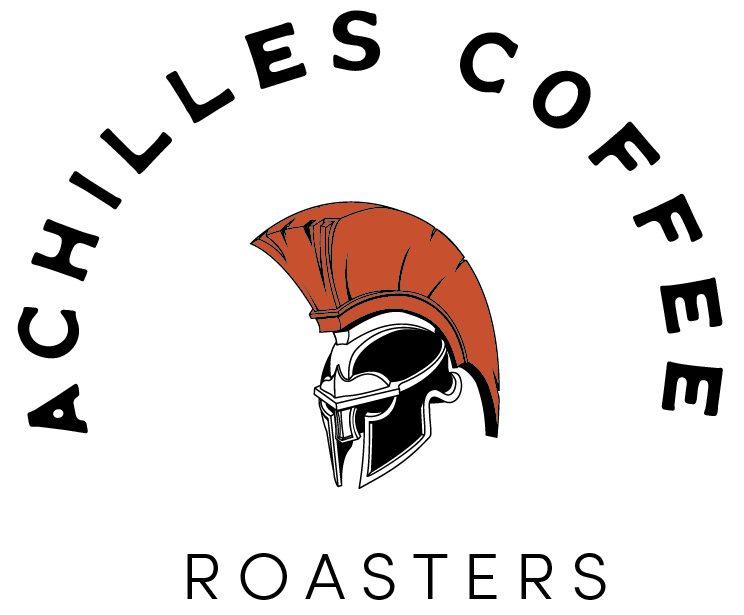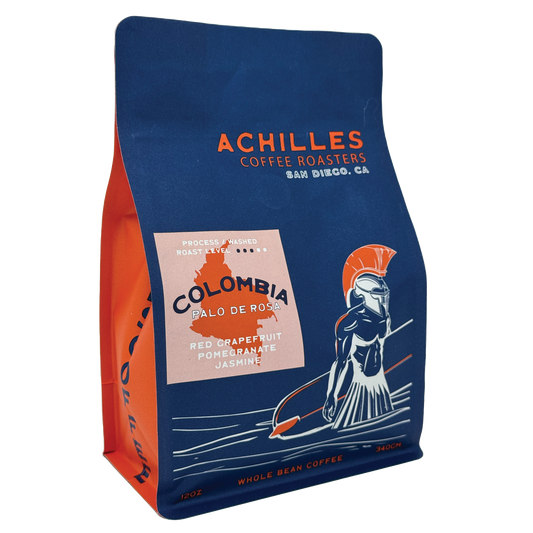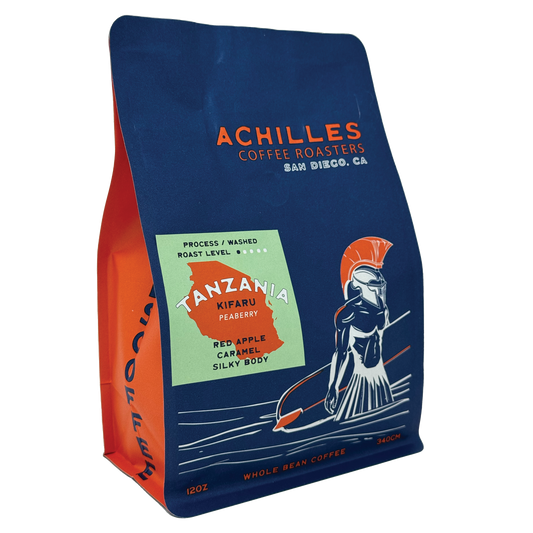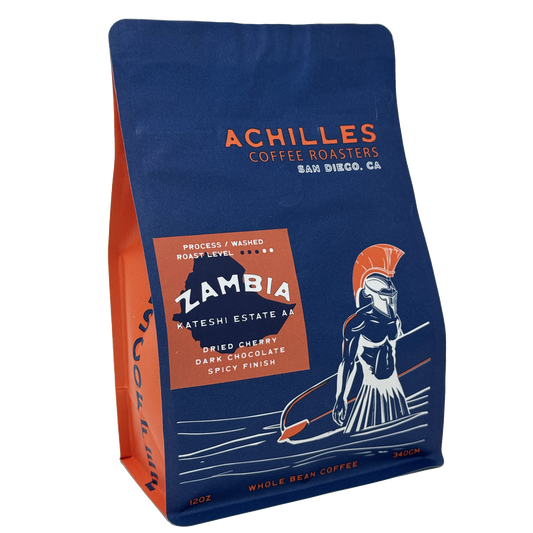Cold brew coffee has exploded in popularity, and for good reason—it’s smooth, refreshing, and versatile. But there’s more to cold brew than just steeping grounds in water. Welcome to Cold Brew Labs, where we unlock the secrets of crafting perfect DIY concentrates, experimenting with nitro cold brew, and mixing coffee cocktails that will wow at home.
In this guide, we’ll cover:
-
What cold brew is (and how it differs from iced coffee)
-
How to make cold brew concentrate at home
-
How to serve nitro cold brew
-
Recipes for coffee-based cocktails and mocktails
Get ready to take your cold coffee game to the next level!
What Is Cold Brew Coffee?
Cold brew coffee is a brewing method that uses cold or room-temperature water to extract coffee over an extended period—typically 12 to 24 hours. Unlike traditional brewing techniques that rely on heat to accelerate extraction, cold brew takes a slower, gentler approach, resulting in a beverage that’s smoother, lower in acidity, and often naturally sweeter than its hot-brewed counterparts.
The key characteristics that define cold brew include:
-
Cold or ambient water: No boiling or hot water is used. This slows down the extraction process and alters the solubility of compounds in the coffee.
-
Extended steeping time: Because cold water extracts flavor more slowly, the grounds are steeped for many hours—often overnight—to achieve a rich, full-bodied result.
-
Coarse grind size: Cold brew requires a coarse grind to prevent over-extraction and sediment, and to allow for easier filtration.
It’s important to note that cold brew is not the same as iced coffee. While both are served cold, iced coffee is typically brewed hot (using methods like drip or pour-over) and then chilled by pouring over ice. As a result, iced coffee often retains higher acidity and a sharper flavor profile. Cold brew, on the other hand, tends to be rounder, softer, and less bitter, thanks to its slow, cold extraction method.
Many cold brew drinkers are drawn to its approachable, mellow taste, which often emphasizes chocolatey, nutty, or sweet notes and downplays the brighter, acidic characteristics of lighter roast coffees. It’s also highly versatile—you can drink it straight, dilute it with water or milk, serve it over ice, infuse it with flavors, or even use it in cocktails.
Whether you’re looking for a refreshing summer drink or a smooth, low-acid alternative to traditional brews, cold brew offers a unique and flavorful way to enjoy coffee—especially when brewed with care and quality beans.
DIY Cold Brew Concentrate: How to Make It at Home
Making cold brew concentrate at home is simple, budget-friendly, and allows you to customize your brew exactly to your liking. With just a few basic tools and ingredients, you can create a rich, smooth concentrate that serves as the foundation for a wide range of cold coffee drinks.
What You’ll Need:
-
Coarse ground coffee: The grind size should be about the consistency of raw sugar or sea salt. A burr grinder is ideal for achieving an even grind, which ensures uniform extraction and makes filtration easier.
-
Filtered water: Since cold brew is mostly water, use filtered or high-quality tap water to avoid off-flavors.
-
A large jar, pitcher, or French press: Choose a container with a lid that holds at least 1 liter (or more if scaling up).
-
Cheesecloth, nut milk bag, or fine mesh strainer: For straining out the grounds after steeping. A coffee filter can work too, though it may slow down the process.
Basic Cold Brew Concentrate Recipe:
-
Measure your ingredients: Use a 1:4 ratio of coffee to water for a strong concentrate. For example, combine 1 cup (about 85–100g) of coarsely ground coffee with 4 cups (about 1 liter) of cold or room-temperature filtered water.
-
Mix well: In your jar or pitcher, add the coffee grounds first, then pour the water evenly over them. Stir gently to make sure all grounds are fully saturated—no dry pockets should remain.
-
Cover and steep: Cover your container with a lid or plastic wrap and let it steep:
-
At room temperature: Steep for 12–16 hours.
-
In the refrigerator: Steep for 16–24 hours for a slightly slower, smoother extraction.
-
Strain thoroughly: After steeping, pour the mixture through your chosen filter—cheesecloth, a nut milk bag, or a fine mesh sieve—into a clean container. For a cleaner cup, you can strain it again through a paper coffee filter or fine mesh.
-
Store properly: Transfer your strained concentrate into a sealed jar or bottle and store in the refrigerator. It will keep fresh for up to 10 days, though the flavor is best within the first week.
Serving Ideas:
-
Standard cold brew: Dilute your concentrate with cold water at a 1:1 ratio (or to taste), then serve over ice. This gives you a refreshing, easy-drinking brew with less caffeine than the concentrate.
-
Creamy options: Mix the concentrate with milk, oat milk, almond milk, or coconut milk for a smoother, latte-style drink. Add ice and a dash of cinnamon or vanilla for a café-quality experience.
-
Flavored cold brew: Enhance your cold brew with syrups (vanilla, caramel, hazelnut), spices (cardamom, cinnamon sticks), or even citrus peels for a bright, refreshing twist.
-
Cold brew “mocktails”: Combine your concentrate with tonic water, sparkling water, or a splash of bitters for a more sophisticated, low-alcohol-style beverage. Garnish with orange peel or herbs like mint for flair.
-
Hot cold brew: Want something warm but smooth? Heat the concentrate gently and dilute with hot water for a low-acid cup with a rich body—great for sensitive stomachs.
Whether you're sipping it straight, blending it with milk, or mixing up coffee cocktails, homemade cold brew concentrate is a flexible foundation for your cold coffee routine. Once you get the basics down, experiment with different beans, roast levels, and ratios to discover what works best for your taste.
Nitro Cold Brew at Home
Nitro cold brew is a rich, creamy twist on traditional cold brew—infused with nitrogen gas to produce a texture and presentation that closely resembles a stout beer. With its cascading bubbles, velvety mouthfeel, and naturally sweet flavor, nitro cold brew delivers a café-quality experience that’s surprisingly achievable at home.
Why Nitro Cold Brew?
Nitro isn’t just about looks—it transforms cold brew into a completely different beverage. Here’s why it’s worth the effort:
-
Naturally sweet without sugar: The nitrogen suppresses some of the bitterness and enhances the coffee’s natural sweetness, making it smooth and enjoyable without added sweeteners.
-
Silky mouthfeel: Infusing nitrogen gives the coffee a rich, creamy texture—similar to a draught beer head—without any dairy or cream.
-
Cascading bubbles: The visual presentation is striking—tiny bubbles swirl and settle into a frothy head, making every pour feel like a barista-level moment.
How to Make Nitro Cold Brew at Home
You’ll Need:
-
Cold brew concentrate: Ideally brewed strong (1:4 ratio), chilled, and filtered well to avoid clogging your equipment.
-
Whipped cream dispenser (ISI-style) or home nitro system: A standard 1-pint stainless steel whipped cream siphon works well. Specialized nitro coffee systems like the GrowlerWerks uKeg Nitro or NitroPress can also be used for more advanced setups.
-
Nitrogen (N₂) cartridges: These are different from nitrous oxide (N₂O) cartridges used for whipped cream. Make sure to purchase pure nitrogen cartridges for best texture and taste.
Step-by-Step Instructions:
-
Chill your cold brew: Before infusing, make sure your cold brew is thoroughly chilled. This helps the nitrogen bind better and enhances the cascading effect during pouring.
-
Fill your dispenser: Pour your cold brew concentrate into the whipped cream dispenser. Do not overfill—leave some space for gas expansion (fill to about 80–85% capacity).
-
Insert nitrogen cartridge: Attach the charger holder containing one nitrogen cartridge. Twist it in until you hear the gas release into the chamber.
-
Shake well: Shake the canister vigorously for 25–30 seconds to properly distribute the gas through the liquid.
-
Dispense into a chilled glass: Hold the dispenser upside down and release the nitro cold brew into a pre-chilled glass. You should see a beautiful cascade of bubbles forming a creamy, Guinness-like head.
-
Serve immediately: Nitro is best enjoyed fresh. The nitrogen will slowly dissipate over time, so serve and drink shortly after pouring.
Tips for Success:
-
Use pure nitrogen, not N₂O: Nitrous oxide creates foam but doesn't produce the same silky texture or fine bubble structure as nitrogen. N₂O is fine for whipped cream but not for nitro coffee.
-
Use a fine strainer for your cold brew: Ensure your concentrate is free from grit or sludge that can clog your dispenser nozzle.
-
Experiment with dilution: If your concentrate is too strong, you can dilute it slightly with filtered water before nitrogen infusion. Just be careful not to lose the intensity that makes nitro so flavorful.
-
Chill everything: Cold coffee, cold canister, and cold glass all help enhance the texture and appearance of the final product.
-
Use a stout glass: The shape helps showcase the cascade effect and gives you a proper café-style presentation.
Bonus Idea: Flavored Nitro Cold Brew
If you want to add a creative twist, try infusing your cold brew with natural flavorings before nitrogenating:
-
Vanilla beans or extract
-
Cinnamon sticks
-
Orange peel
-
Cocoa nibs
-
Cardamom pods
Let the flavoring steep in the cold brew for a few hours, then strain thoroughly before charging with nitrogen.
Whether you're a cold brew purist or a home barista seeking that extra edge, nitro cold brew adds a creamy, elevated dimension to your coffee game—and with a bit of preparation, you can recreate the magic right in your kitchen.
Cold brew isn’t just for sleepy mornings—it makes a bold, complex base for both spirited and alcohol-free drinks. Its natural sweetness, smooth texture, and chocolatey depth pair beautifully with everything from whiskey to tropical fruit. Whether you're hosting a brunch, winding down in the evening, or looking for a creative mocktail, cold brew coffee can transform your drink menu.
Cold Brew Cocktail Recipes
Cold Brew Negroni
A bold, bittersweet twist on the classic aperitivo.
Ingredients:
-
1 oz cold brew concentrate
-
1 oz sweet vermouth
-
1 oz Campari
-
Orange peel, for garnish
Instructions:
-
Add all ingredients to a mixing glass filled with ice.
-
Stir for 20–30 seconds until well chilled.
-
Strain into a rocks glass over fresh ice.
-
Garnish with a swath of orange peel—express the oils over the drink before dropping it in.
Flavor Notes:
Balanced and complex with bitter orange, herbal sweetness, and deep coffee undertones. Perfect as a pre-dinner drink or nightcap.
Coffee Old Fashioned
An elevated spin on the whiskey classic, with depth and richness from cold brew.
Ingredients:
-
2 oz bourbon
-
0.75 oz cold brew concentrate
-
0.5 oz simple syrup (or brown sugar syrup for more molasses notes)
-
2 dashes Angostura bitters
-
Orange peel or cherry for garnish
Instructions:
-
Combine all ingredients in a mixing glass with ice.
-
Stir until well-chilled.
-
Strain into a rocks glass over a large ice cube.
-
Garnish with an orange twist or a Luxardo cherry.
Flavor Notes:
Smooth, slightly smoky, with warming spice from the bitters and a rich backbone from the cold brew. Great for sipping slowly.
Coconut Cold Brew Colada (Cocktail or Mocktail)
A tropical delight that works with or without alcohol.
Ingredients:
-
3 oz cold brew concentrate
-
3 oz coconut water
-
1 oz coconut cream
-
(Optional: 1 oz dark rum or spiced rum)
-
Toasted coconut flakes or nutmeg, for garnish
Instructions:
-
Add all ingredients (including optional rum) to a shaker filled with ice.
-
Shake vigorously until chilled and creamy.
-
Strain into a tall glass or tiki mug filled with fresh ice.
-
Garnish with toasted coconut, grated nutmeg, or a pineapple wedge.
Flavor Notes:
Creamy, tropical, and indulgent. A smooth alternative to a piña colada, perfect for warm afternoons or beach-inspired evenings.
Cold Brew Tonic
A refreshing, caffeinated highball with a citrus twist.
Ingredients:
-
2 oz cold brew concentrate
-
4 oz high-quality tonic water
-
Lime wedge or peel, for garnish
Instructions:
-
Fill a highball glass with ice.
-
Pour in the cold brew concentrate.
-
Slowly top with tonic water.
-
Squeeze in a wedge of lime and drop it in, or garnish with a strip of lime peel.
Flavor Notes:
Bright, bubbly, and bittersweet with a crisp citrus edge. Great as a mocktail or brunch refreshment.
Tips for Mixing Cold Brew Cocktails
-
Use strong concentrate: A typical 1:4 ratio of coffee to water ensures the coffee flavors stand out and don’t get diluted by mixers or ice.
-
Choose the right roast: Medium to dark roasts with chocolate, nut, or caramel notes tend to work best in cocktails. Lighter roasts can be used for more citrusy or floral profiles.
-
Serve cold: Always use chilled ingredients and glassware for the best texture and taste.
-
Try non-alcoholic variations: Use zero-proof spirits or skip alcohol entirely—cold brew carries the flavor backbone all on its own.
Cold brew coffee is more than a drink—it’s a cocktail ingredient with surprising range. Whether you’re sipping a twist on a classic or creating your own signature drink, it brings depth, complexity, and a smooth caffeine kick to every glass.
Cold Brew Brewing & Flavor Tips
Cold brew coffee is incredibly forgiving and customizable, making it a great playground for home brewers. With the right ingredients and a few smart techniques, you can take your cold brew from basic to exceptional. Here’s how to enhance your brew and personalize the experience:
Use Fresh, High-Quality Coffee
The foundation of any great cold brew is fresh, high-quality beans. Single origin coffees—especially those with fruity, floral, or chocolatey notes—tend to shine in cold brew, as the slow extraction highlights subtle flavors that hot brewing can sometimes mask. Beans from Ethiopia, Colombia, Guatemala, or Kenya often produce exceptional results. Always grind just before brewing to preserve aroma and brightness.
Experiment With Brew Ratios
While a 1:4 ratio (1 part coffee to 4 parts water) is standard for concentrate, playing with ratios allows you to fine-tune body, strength, and flavor.
-
Stronger (1:3): Rich, bold, and more caffeinated—great for adding milk or using in cocktails.
-
Lighter (1:5 or 1:6): More refreshing and tea-like—perfect for sipping straight or over ice.
-
Start with small test batches to explore how ratio changes affect your preferred brew.
Add a Pinch of Salt
It may sound unusual, but a tiny pinch of salt can enhance the natural sweetness of your cold brew and reduce bitterness. This is especially helpful if your beans are a bit older or if your roast is on the darker side. Use fine sea salt or kosher salt, and start small—just a couple of grains per cup.
Spice It Up With Add-Ins
Cold brew is the perfect base for infusions. Adding spices during the steeping process can introduce subtle, aromatic layers without overpowering the coffee. Some great additions include:
-
Cinnamon sticks – warm and sweet; pairs well with medium or dark roasts.
-
Cardamom pods – floral and spicy; popular in Middle Eastern coffee traditions.
-
Vanilla beans or extract – enhances sweetness and softens acidity.
-
Cocoa nibs – add chocolate depth without sugar.
-
Citrus peel (orange, lemon) – brightens up lighter roasts with a zesty kick.
To infuse, add your chosen ingredient(s) directly into the coffee and water mixture before steeping. Be sure to strain well after brewing to remove any solids.
More Tips to Maximize Flavor:
-
Use filtered water: Chlorine and minerals in tap water can dull flavor or cause off-notes.
-
Grind consistency matters: A coarse, even grind (like raw sugar) ensures smooth flavor and easier straining. Uneven grinds can lead to muddy or over-extracted notes.
-
Don’t oversteep: While it’s tempting to steep longer, over-extraction can draw out bitter or woody flavors. 12–18 hours is usually ideal—go longer only if you like a more intense result.
-
Store properly: Once strained, cold brew should be stored in a sealed container in the refrigerator. It stays fresh for 7–10 days, but the flavor is brightest in the first 3–5.
With a little experimentation and attention to detail, cold brew becomes more than just a caffeine delivery system—it becomes a canvas for creative brewing. Try new beans, ratios, and infusions, and you’ll discover how versatile and delicious this method can be.
Cold Brew FAQs
Can I heat cold brew?
Yes, absolutely. One of the advantages of cold brew concentrate is its versatility. You can dilute it with hot water to enjoy a warm, low-acid coffee with the same smooth flavor profile. Simply heat water separately and pour it over your desired amount of concentrate—usually a 1:1 ratio works well. This method preserves the round, mellow characteristics of cold brew while delivering the comfort of a hot cup.
How long does cold brew last?
Cold brew concentrate stays fresh for up to 10 days when stored in an airtight container in the refrigerator. After the first week, you may notice a slight decline in flavor quality—especially in more delicate, fruity coffees. For best results, keep the container sealed tightly and avoid frequent opening, which introduces oxygen and accelerates degradation. Brew smaller batches if you're aiming for peak flavor throughout the week.
What’s the caffeine level in cold brew?
Cold brew concentrate is typically much stronger than regular brewed coffee—sometimes up to twice as concentrated, depending on your brew ratio. This means it can have a significantly higher caffeine content per ounce. A standard 1:4 cold brew ratio can yield 150–200 mg of caffeine per 8 oz when undiluted. To moderate caffeine intake and taste, most people dilute it 1:1 with water, milk, or a milk alternative before drinking.
Can I use any coffee beans for cold brew?
Yes, any coffee can be used, but medium to dark roasts often produce the smoothest, most chocolatey and nutty cold brews. However, light roasts can be excellent too—especially if you enjoy more vibrant, tea-like flavors or fruity acidity. Single-origin beans tend to showcase unique characteristics more clearly, making them a great choice for adventurous brewers.
Is cold brew less acidic than hot coffee?
Generally, yes. Cold brew is typically lower in perceived acidity due to the long, slow extraction using cold water. This makes it gentler on sensitive stomachs and easier to enjoy black. However, if you're using a very bright or acidic bean (like an Ethiopian Yirgacheffe), some of that acidity may still come through—just in a softer, rounder way than with hot brewing.
Can I make cold brew with pre-ground coffee?
You can, but it’s not ideal. Pre-ground coffee is usually too fine for cold brew, leading to over-extraction, bitterness, or cloudy texture. If you must use pre-ground coffee, try selecting a coarse grind if available, and shorten the brew time slightly (8–12 hours instead of 18). For best results, grind whole beans fresh using a burr grinder set to a coarse consistency.
Do I need special equipment to make cold brew?
Not at all. You can use items you likely already have at home: a jar or pitcher, coarse ground coffee, and a way to strain (cheesecloth, a fine mesh sieve, or a nut milk bag). For more convenience or cleaner results, cold brew makers like the Toddy system, Hario Mizudashi, or a French press can make the process even easier—but they’re not required.
Is cold brew healthier than regular coffee?
Cold brew contains the same basic nutrients and compounds as hot coffee but is often easier on the stomach due to its lower acidity. Depending on how you drink it (e.g., without added sugar or cream), it can be a very clean, refreshing, and antioxidant-rich beverage. However, the caffeine concentration is higher per ounce, so moderation is key if you're sensitive to stimulants.
Conclusion: Welcome to Your Cold Brew Lab
Cold brew is a playground for coffee lovers. Whether you’re making a simple iced coffee, experimenting with nitro, or shaking up coffee cocktails, cold brew invites creativity and personalization.








